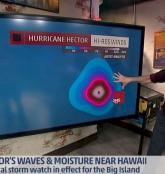It’s one thing being invited to speak at an industry event in front of dozens of the leading scientists in your field. It’s another to find, with a certain astonishment, that virtually all of them use RMS HWind to validate their scientific work.
Last month, at a U.K. Met Office-hosted workshop, I spoke about the RMS HWind hurricane modeling solutions to a group of high-wind remote-sensing scientists from academic and government agencies from around the world, including:
- European Space Agency (ESA)
- National Aeronautics and Space Administration (NASA)
- French Research Institute for Exploitation of the Sea (IFREMER)
- Royal Netherlands Meteorological Institute (KNMI)
- Met Office (U.K.)
- European Center for Medium-Range Weather Forecasts
- National Space Science Center, Chinese Academy of Sciences
- Institute of Applied Physics of the Russian Academy of Sciences
- National Oceanic and Atmospheric Administration (U.S.)
All of the above agencies are researching how satellite-mounted remote wind sensors can be used, most effectively, to inform on hurricanes and typhoons developing over the ocean.
During the workshops I was delighted to learn that every major remote sensing agency had used the RMS HWind archive of historical storms to validate and calibrate their sensor programs for detecting high winds from space. RMS HWind also provides real-time analysis of hurricanes as they happen with observational data from instruments in the air, in the sea and on land – including aircraft reconnaissance, GPS dropsonde instruments, sea buoys and satellites.
By citing HWind products and research in their peer-reviewed publications, these agencies provide independent endorsements that enhance the scientific credibility of the HWind archives and services, while also giving us a chance to evaluate cutting-edge technology before it becomes operationally available.
There is tremendous value in scientific collaboration and, as such, RMS facilitates the science community’s understanding of hurricanes by providing our academic partners free access to HWind products for their scientific investigations.
Sensors in Space
None of the satellites we discussed at the Met Office workshop actually measure wind directly – rather, they measure a signal which is influenced by the wind. So, for example, the new NASA CYGNSS system measures the reflection of GPS signals off sea’s surface, which is like the reflection of the moon on the surface of a lake. Winds disturb the surface and this scatters the signal.
Another satellite, the Canadian RADARSAT-2, has already been up for a few years and can capture images of the fine scale roughness of the ocean surface. But to collect these images and convert them to a wind speed reading requires a lot of advance planning, followed by lengthy processing.
Which is where RMS HWind comes in. Our 1 km gridded HWind Snapshots make it easy for scientists to overlay their satellite instrument measurements (typically a microwave signal reflected from the sea surface) over our wind analyses. They can do this for several storms of various sizes and intensities to convert the measured signal to wind speed over a range of meteorological and oceanic conditions.
Due for release this winter, the HWind Enhanced Archive of wind hazard metrics will provide a high resolution library of tropical cyclone wind fields for the North Atlantic, the Caribbean, Gulf of Mexico, and the east and central Pacific. In the coming years we’d hope to see the expansion of tropical cyclone wind field monitoring globally.
This expansion could benefit areas of the world with insurance protection gaps hugely. Increased insurance penetration in the Asian and Australian markets, together with new risk transfer products using parametric triggers, could help improve financial resilience to catastrophic tropical cyclones in whole new regions of the world.





